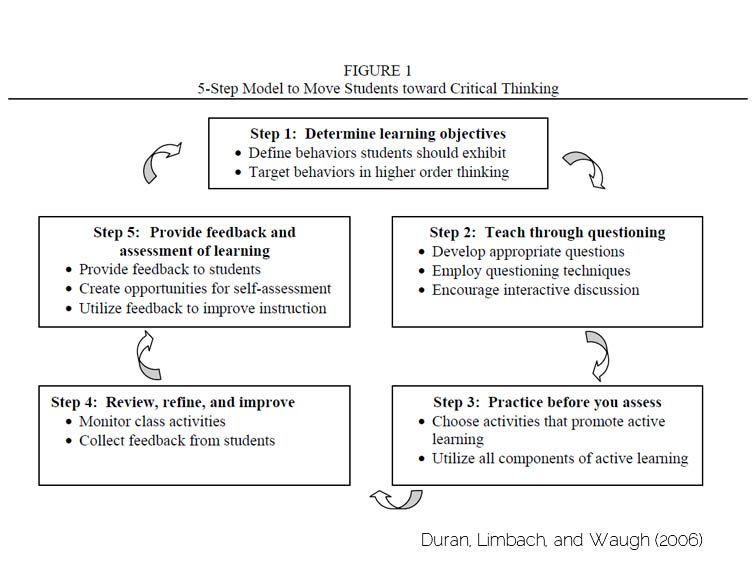A Basic Model For Teaching Critical Thinking
by TeachThought Staff
Like anything else that you’d like to see happen in your classroom, promoting critical thinking skills is a matter of planning, priority, and practice.
While teachers are often admonished to push students towards higher-level thinking activities, beyond Bloom’s Taxonomy (or one of TeachThought’s own learning taxonomies), there are precious few models and frameworks that are accessible, comprehensive, or universal enough to be used on a daily basis.
In was in that light that we found the above model by Duran, Limbach, and Waugh (2006) useful. And better yet, it (more or less) parallels Hunter’s basic lesson design that has been used for years as a model for lesson planning, making it far more accessible to most K-12 teachers without having to shoehorn one more thing.
5 Steps To Plan For Teaching Critical Thinking
Step 1: Determine learning objectives
Step 2: Teach through questioning
(Might we recommend the QFT strategy?)
Step 3: Practice
Step 4: Review, refine, and improve
Step 5: Provide learning feedback
Note: You can find our post on 20 Ways to Provide Effective Learning Feedback here.
Using It
While pretty basic, this model is practical and thus probably worth a look for most teachers (which is why we’ve shared it here)
The idea of defining target behaviors and actions from students is especially helpful, essentially asking you, as a teacher, to decide what kind of critical thinking you’re hoping and designing for might ‘look like’ in a given lesson or activity. Then you plan backward from that.
Using this in your planning doesn’t require you to fill out yet another template on a daily basis. Rather, the simplest path to using it is likely at the unit design level.
Once you’ve selected your learning standards–and prioritized them–you can design an assessment, performance, or project artifact that requires students to demonstrate mastery of those standards while emphasizing the role of questioning in the learning process. (And perhaps modeling why questions are more important than answers.)
You can also bring a copy to your next Data Team/PLC meeting and see what colleagues think about its simplicity and potential function.
Planning For Critical Thinking: A 5-Step Model
